Things to do în Chișinău Moldova
Chisinau, the capital city of Moldova, is a hidden gem for tourists seeking an off-the-beaten-path destination in Eastern Europe. Situated in the southeastern part of the country, Chisinau offers a unique blend of history, culture, and natural beauty that will captivate any visitor.
One of the city’s highlights is its architecture. Chisinau is home to a blend of different architectural styles, including Soviet-era buildings, neoclassical structures, and modern designs. Take a stroll through the city center to admire the grandiose government buildings, such as the Parliament Palace and the Presidency of Moldova. The Arch of Triumph, a symbol of the city, is reminiscent of the Arc de Triomphe in Paris and offers panoramic views of Chisinau.
For history enthusiasts, the National Museum of History of Moldova provides a comprehensive overview of the country’s past. The museum showcases a wide range of artifacts and exhibits, including ancient artifacts, medieval weaponry, and traditional costumes. Another must-visit is the Pushkin Museum, dedicated to the famous Russian poet and playwright Alexander Pushkin, who spent some time in Chisinau.
Nature lovers will appreciate the abundance of parks and green spaces in Chisinau. Valea Morilor Park, situated around a stunning lake, is perfect for leisurely walks, cycling, or picnicking. The Park of the Ștefan cel Mare Monument offers a relaxing atmosphere with beautifully landscaped gardens and a monument honoring Moldova’s national hero. Additionally, the Botanical Garden showcases a vast collection of plants, including rare species, making it a must-visit for horticulture enthusiasts.
To experience the local culture, head to the Central Market, where you can find a wide range of traditional Moldovan foods, crafts, and souvenirs. Don’t miss the opportunity to try local specialties like mamaliga (a traditional cornmeal dish) and various types of Moldovan wine. Moldova is famous for its winemaking, and many vineyards are located just a short drive away from the capital. A wine tasting tour is a great way to explore the country’s rich wine heritage and enjoy picturesque landscapes.

Despite being a small capital, Chisinau offers a vibrant nightlife scene. The city is dotted with trendy bars, clubs, and restaurants where you can sample local cuisine, listen to live music, and enjoy a vibrant atmosphere. Stefan cel Mare Central Park is a popular gathering place, with its open-air cafes and entertainment options.
Get ready to explore, indulge, and create lasting memories in this captivating destination.
A guided tour of Chisinau is always recommended.
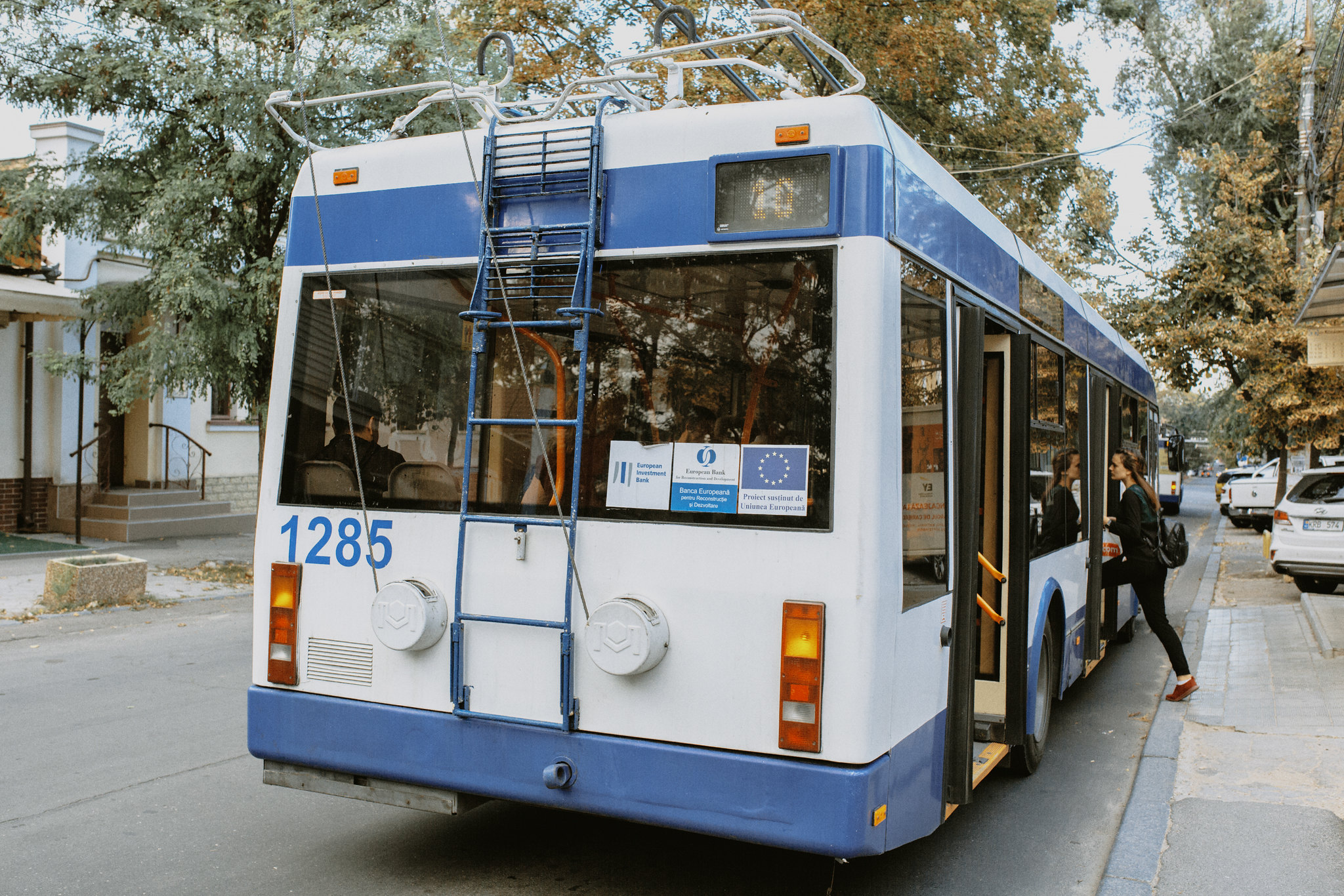
How to Get Around Chişinău
Chişinău, Moldova’s capital, is easy to get around, with a variety of transportation alternatives to meet your needs. You’ll discover handy options to experience the city’s beauty and attractions, such as public transportation, taxis, and even taking a walk!
Public Transport
Chişinău has a well-developed public transportation system that includes buses, trolleybuses, and minibuses, each accommodating around 15 passengers. This mode of transportation is not only cost-effective but also seamlessly connects various parts of the city, making it an ideal option for travelers on a budget. Tickets can be purchased onboard or at kiosks.
Taxis
Taxis are readily available in Chisinau, and you can easily hail one on the streets or use taxi-hailing apps such as Yandex.Taxi, iTaxi, or Clever Taxi. Make sure to negotiate the fare beforehand or ensure that the meter is used. Note that some taxi drivers may try to overcharge tourists, so it’s best to agree on the price in advance or use a reputable app.
Biking
Chisinau has been making efforts to promote cycling, and there are now bike-sharing programs available. Companies like Velotrafic offer rental services for bicycles. Additionally, there are designated bike lanes in some parts of the city, making it easier and safer to cycle.option.
Walking
Chişinău’s city center is relatively small, making it ideal for exploring on foot. Wander through the streets, soak in the local atmosphere, and stumble upon hidden gems.
Car Rental
Car rental is an alternative if you want more independence or prefer to go at your own leisure. Just remember that traffic laws and driving habits may differ from what you are used to.
Rideshare Apps
In recent years, car-sharing services such as Bolt (formerly Taxify) and Yandex.Drive have become popular in Chisinau. These services allow you to rent a car by the minute or hour, providing a flexible and convenient transportation option.
Trolleybus –
Trolleybuses: The bus system in Chisinau is the most common and affordable mode of public transportation. Buses run regularly and cover most of the city, with routes and stops clearly marked. You can purchase tickets directly from the driver or at kiosks.Trolleybuses are another affordable and convenient option for getting around.
Mini Buses
Minibuses (Marshrutkas): These are small vans that follow fixed routes and can be flagged down anywhere along the route. Marshrutkas are often crowded but can be a quicker alternative to buses. You pay the fare directly to the driver.
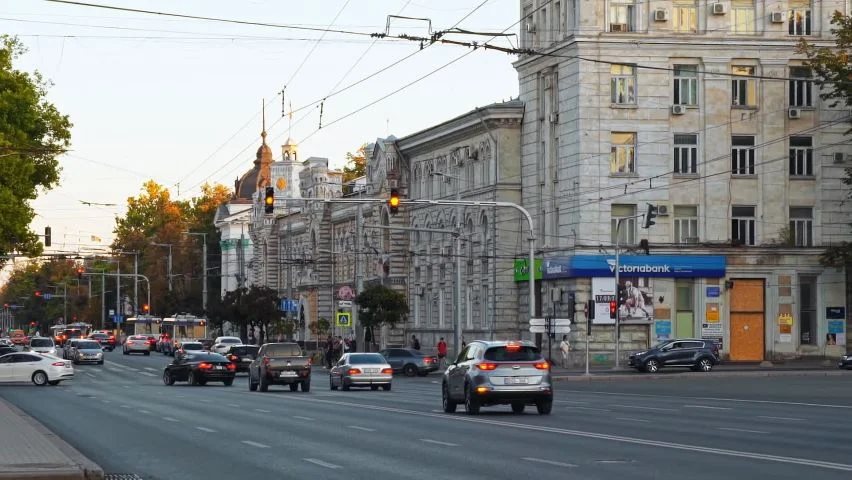
Best Time to Visit Chişinău
Deciding the best time to visit Chişinău, Moldova, and appreciate its beauty is essential for a memorable experience. The city has a continental climate with various seasons, so choose when to visit depending on what you would like to do.
Spring in Chişinău (March to May)
Spring is a terrific time for outdoor activities and sightseeing because of the pleasant weather and blooming scenery. The city comes to life with colorful blooms, and the weather is generally nice. This is when I opted to visit.
Summer in Chişinău (June to August)
Chişinău has moderate to hot temperatures in the summer. This is peak tourist season (which means it is more expensive to visit), with festivals, open-air events, and lively street activity. Remember that July and August can get quite warm, so dress accordingly.
Autumn in Chişinău (September to November)
Autumn provides pleasant temperatures and a stunning display of changing leaves. It’s a calmer season to visit, allowing you to explore the city’s attractions without dealing with the summer crowds.
Winter in Chişinău (December to February)
Winter is chilly and often snowy, creating a unique atmosphere. While some outdoor activities may be limited, the holiday season brings festive markets and cultural events.
The best time to visit Chişinău depends on your preferences. Summer is the best time to visit if you appreciate lively activities and pleasant weather. Consider autumn or spring if you like milder weather and fewer tourists. Winter is great for experiencing Moldova’s winter beauty and cultural offerings.
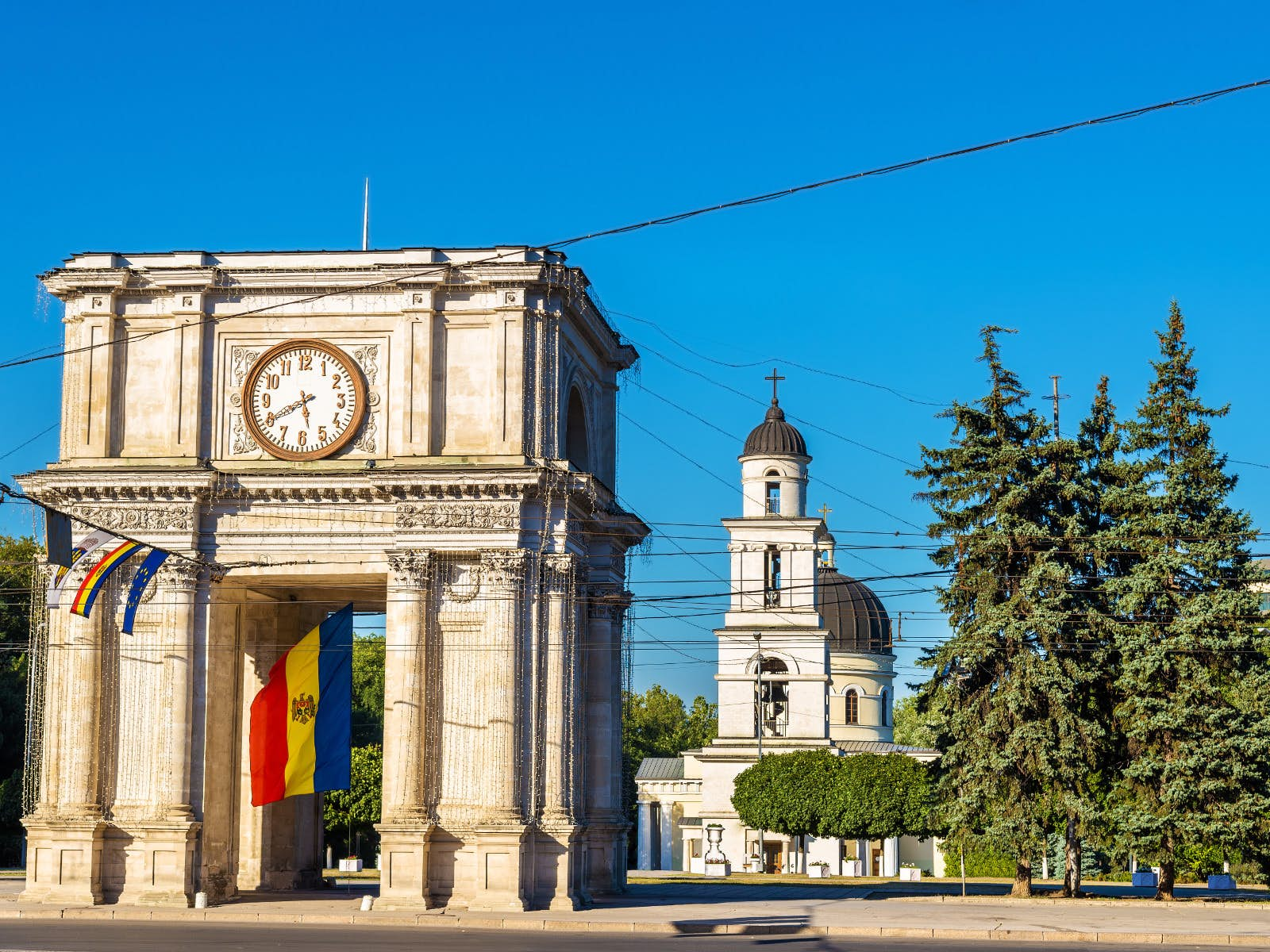
Best Things to Do in Chişinău, Moldova
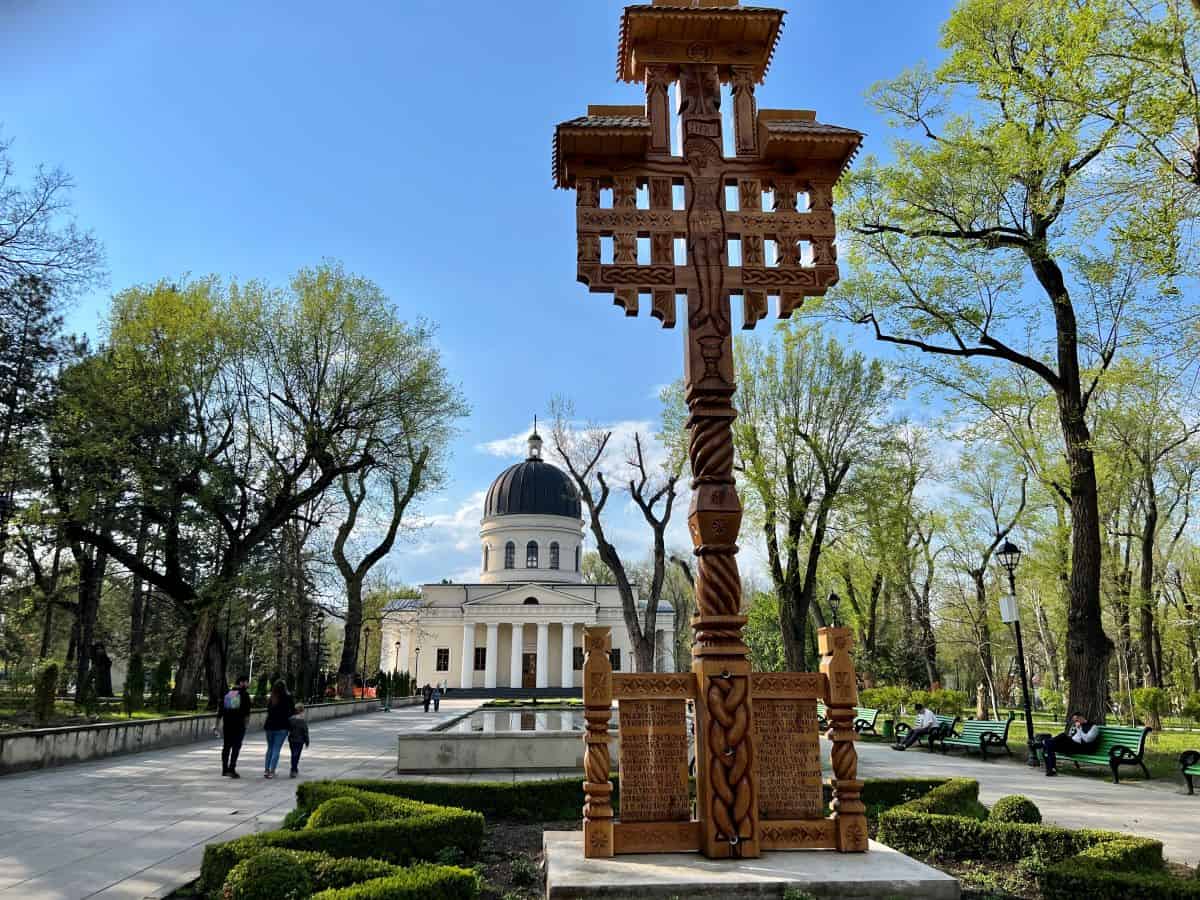
Nativity Cathedral
The Nativity Cathedral, also known as the Metropolitan Cathedral, is a prominent religious landmark in Chisinau, the capital city of Moldova. It is the main cathedral of the Moldovan Orthodox Church and is located in the central part of the city. Here’s some information about the cathedral:
- History: The construction of the cathedral began in 1830 and was completed in 1836. It was initially built as a wooden church, but it was later rebuilt using stone and expanded in the early 20th century to its current grandeur.
- Architecture: The Nativity Cathedral is an impressive example of Russian neo-Byzantine architectural style. It features a central dome surrounded by four smaller domes and a bell tower. The exterior is adorned with intricate decorative elements, including ornate arches and columns.
- Interior: The cathedral’s interior is equally impressive, characterized by beautiful frescoes, iconostasis, and religious artwork. The iconostasis, a wall of icons and religious paintings separating the main sanctuary from the nave, is particularly noteworthy.
- Religious Significance: The Nativity Cathedral is considered one of the most important Orthodox Christian sites in Moldova. It serves as the cathedral for the Metropolitan Bishopric of Chisinau and All Moldova and is a place of religious worship, ceremonies, and celebrations.
- Cultural Importance: The cathedral holds great significance in Moldovan culture, as it symbolizes the country’s strong Orthodox Christian heritage and identity. It attracts visitors from all over the world who come to admire its architecture, learn about the Moldovan Orthodox Church, or experience its spiritual atmosphere.
- Restoration: Over the years, the Nativity Cathedral has undergone several restoration projects to maintain its historical and cultural significance. The most recent restoration was completed in 2018, ensuring the preservation of this national monument for future generations.
- Surroundings: The cathedral is surrounded by a beautiful park, known as the Cathedral Park or the Cathedral Square, which is a popular gathering place for tourists and locals alike. It offers a peaceful environment for quiet reflection or simply enjoying the scenery.
The Nativity Cathedral is a cherished symbol of Moldovan religious and cultural heritage, and its architectural beauty and significance make it a must-visit attraction for anyone exploring Chisinau.
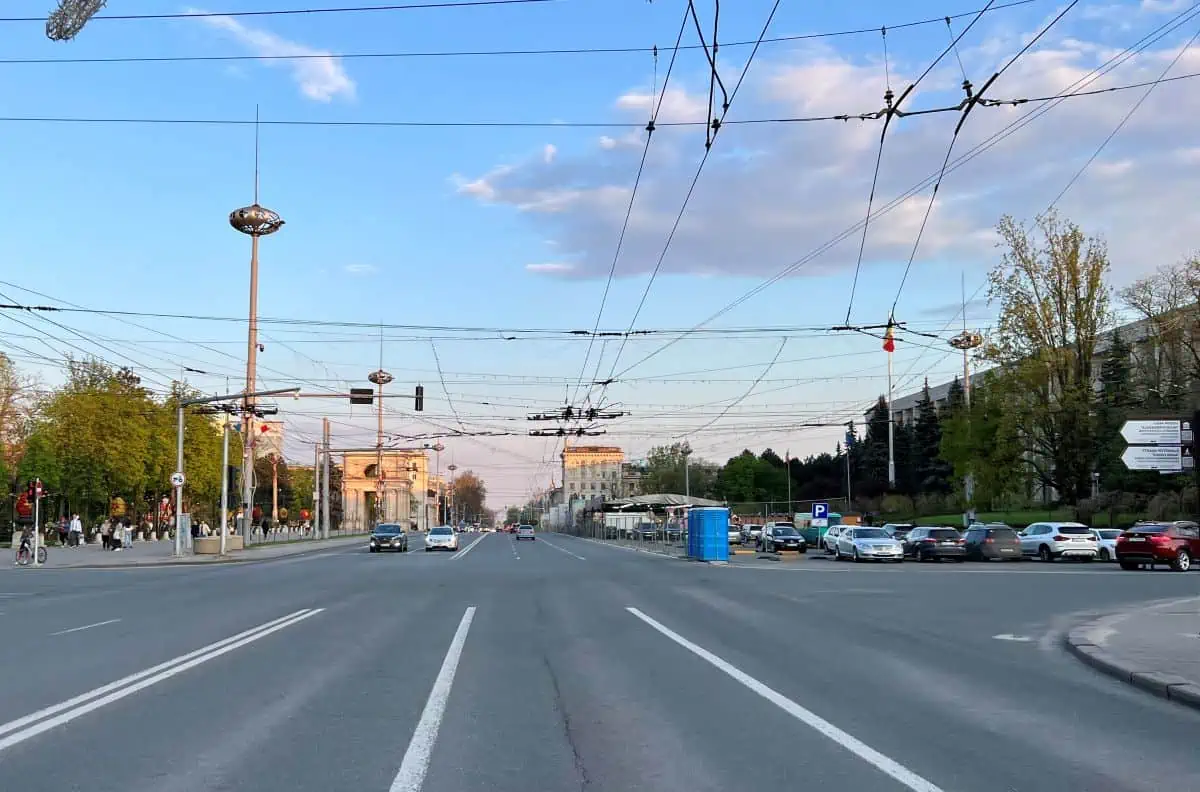
Stefan cel Mare Boulevard
Stefan cel Mare Boulevard is one of the main boulevards in Chisinau, the capital city of Moldova. It is named after Stephen III of Moldova, also known as Stefan cel Mare, who was a famous ruler of Moldova during the 15th century. The boulevard stretches for about 2.5 kilometers, running from the central area of the city, starting near the National Palace and ending at the Dacia Boulevard.


Stefan cel Mare Boulevard is a busy and vibrant street, attracting both locals and tourists. It is lined with numerous shops, cafes, restaurants, and hotels, making it a popular destination for shopping, dining, and entertainment. The boulevard also features various architectural landmarks and monuments, adding to its historical and cultural significance.
One of the notable landmarks along Stefan cel Mare Boulevard is the Nativity Cathedral, an iconic Orthodox cathedral that dominates the city skyline. Built in the early 19th century, it is an important religious and cultural site for the locals and is often visited by tourists.
Another prominent feature of the boulevard is Stefan cel Mare Park, a green space located in the central part of the boulevard. This park offers a pleasant retreat with beautiful gardens, fountains, and benches where people can relax or enjoy a leisurely stroll.
Stefan cel Mare Boulevard is also home to many important governmental and administrative buildings, including the Government House, Ministry of Justice, and the Presidential Palace. These buildings enhance the boulevard’s significance as a symbol of the city’s administrative and political life.
Overall, Stefan cel Mare Boulevard is a bustling and significant street in Chisinau, offering a mix of history, culture, shopping, and entertainment. It is a must-visit place for anyone exploring the capital city of Moldova.
Walking tours in Chisinau are a great way to see the city.
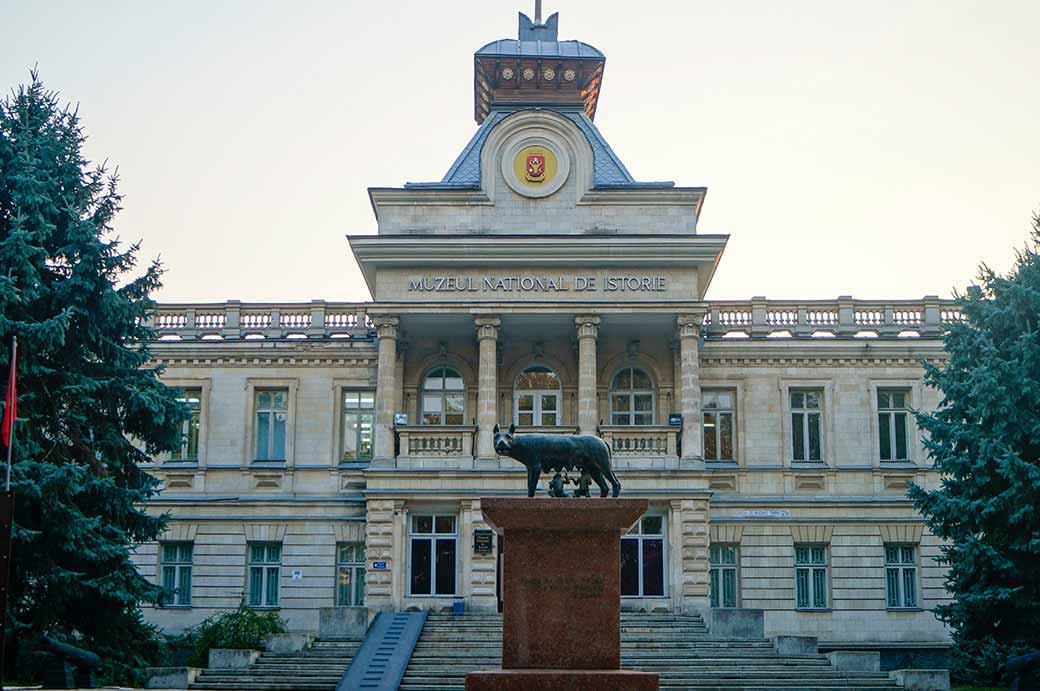
National Museum of History
The National Museum of History in Chisinau, also known as the National Museum of Ethnography and Natural History, is a prominent cultural institution located in the capital city of Moldova. The museum was founded in 1983 and has since become one of the country’s most important landmarks.
The museum aims to preserve and showcase the natural and historical heritage of Moldova, documenting its rich cultural history and traditions. It is housed in an impressive neoclassical building, which itself is considered an architectural gem.
The museum’s exhibits are divided into two main sections: natural history and ethnography. The natural history section features a diverse collection of flora and fauna, fossils, minerals, and geological formations found in Moldova and its surrounding regions. It provides visitors with a comprehensive understanding of the country’s natural environment and biodiversity.
The ethnography section focuses on material and non-material cultural heritage, displaying artifacts, clothing, tools, and everyday objects that represent the traditional way of life of Moldovan communities. These exhibits provide insights into the social, economic, and cultural aspects of the country’s past.
Throughout the year, the National Museum of History organizes various temporary exhibitions, thematic displays, and educational events to engage and educate visitors of all ages. It also hosts lectures, seminars, and workshops on topics related to history, archaeology, ethnography, and natural sciences.
Overall, the National Museum of History in Chisinau offers a captivating journey through Moldova’s past and present, providing a deeper understanding of its cultural and natural heritage.
The museum’s extensive display spans Moldova’s history from ancient times to the present. Authentic artifacts offer unbiased perspectives on the region’s economic, cultural, political, and social history.
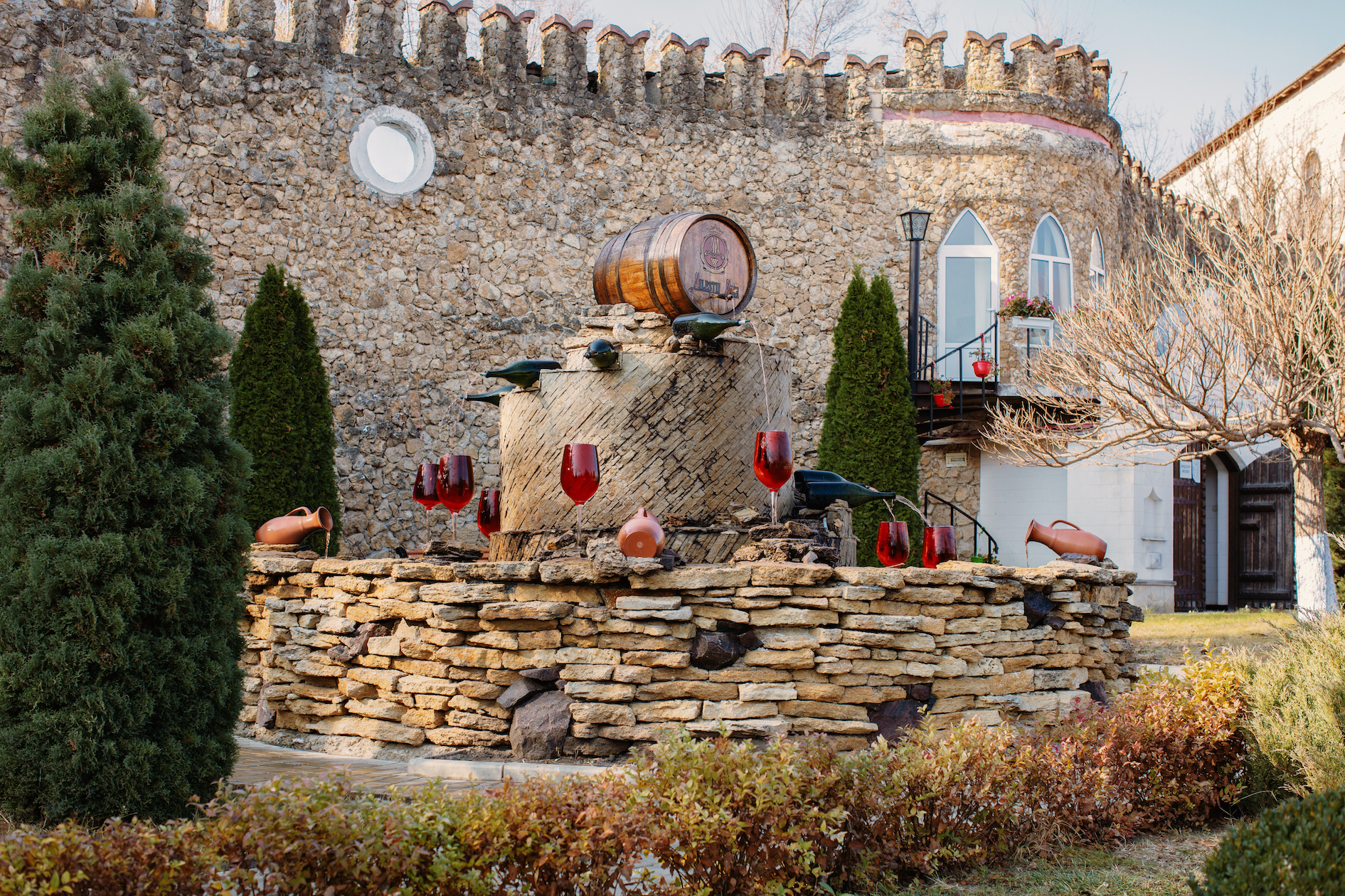
Milestii Mici Winery
Milestii Mici Winery is located in the small country of Moldova, known for its rich winemaking tradition. It is situated near the capital city of Chisinau and is one of the most famous wineries in the country.
The winery is renowned for its extensive underground wine cellar, which holds the Guinness World Record as the largest wine cellar in the world. The underground tunnels stretch over 200 kilometers and are home to millions of bottles of wine, including both aged and newly produced varieties.
Milestii Mici Winery specializes in producing high-quality wines, predominantly reds and sparkling wines. The winery has vineyards covering a total area of nearly 1,200 hectares, where they grow a wide variety of grape varietals, including Cabernet Sauvignon, Merlot, Pinot Noir, Chardonnay, and Sauvignon Blanc.
Visitors to the winery have the opportunity to take guided tours, during which they can explore the vast underground cellars and learn about the winemaking process. The tours often include wine tastings, allowing visitors to sample some of the winery’s best selections. The winery also organizes special events and celebrations, making it a popular destination for wine enthusiasts and tourists alike.
In addition to its wines, Milestii Mici Winery also produces brandy and has its own restaurant where visitors can enjoy traditional Moldovan cuisine paired with their exquisite wines.
Overall, Milestii Mici Winery is a must-visit destination for wine enthusiasts, offering a unique experience to explore the vast underground tunnels, taste exceptional wines, and immerse themselves in the rich winemaking heritage of Moldova.


Chişinău Water Tower
The iconic structure, known as the “Water Tower,” reopened in the autumn of 2011 after an almost 10-year break. The water tower was built in the 19th century and features a unique combination of architectural styles, including elements of Gothic and Renaissance Revival architecture. It formerly supplied water to the city’s locals, rising gently into the sky and reflecting the innovative ideas of its time.
Despite suffering significant damage over its existence, the tower was carefully reconstructed using images from 1980-1983, preserving its historical essence. This stunning architectural structure represents the city’s history and engineering expertise. It also served as a functional water reservoir and a symbol of the city’s development.
Today, the Chişinău Water Tower has evolved into a cultural and historical site, offering visitors a glimpse into the past. The tower’s interior is adorned with exhibitions that showcase its rich history and significance. As you climb the tower’s spiral staircase, you’ll be rewarded with panoramic views of Chisinau’s cityscape, providing a unique perspective of its modern and historical features.
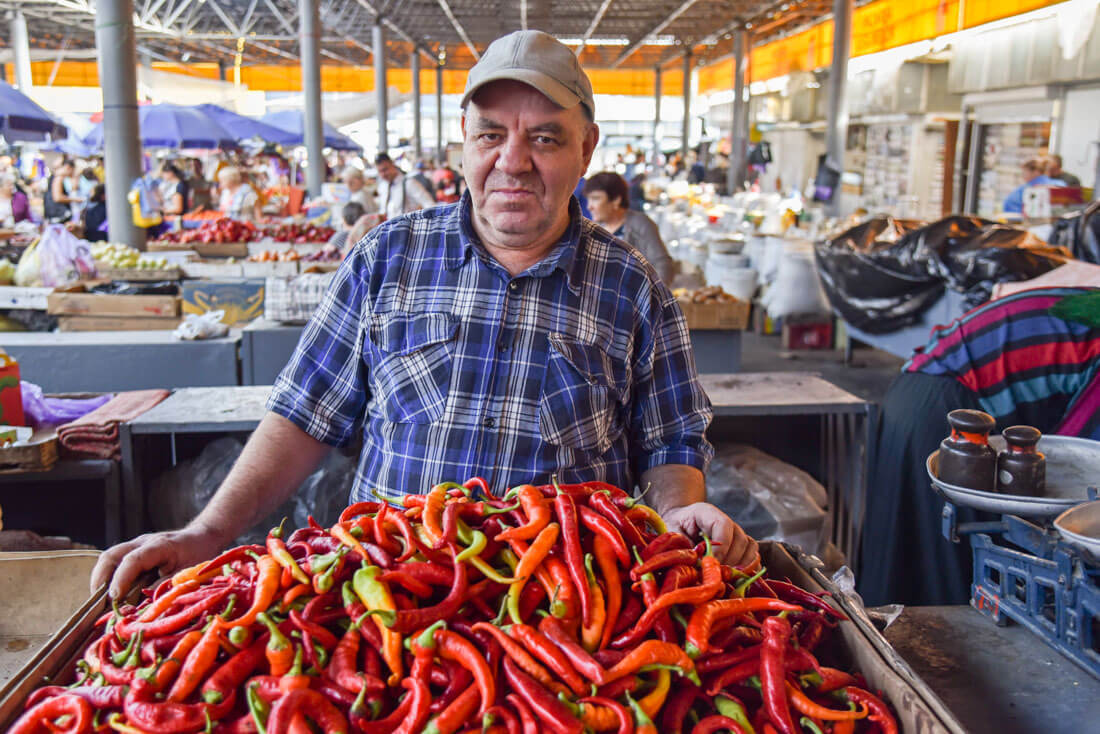

Central Market
The Central Market in Moldova, also known as the Central Halls or the Central Bazaar, is a vibrant and bustling market located in the capital city, Chisinau. It is one of the largest and most popular markets in the country. Here’s some information about the Central Market in Moldova:
- Location: The Central Market is situated in the heart of Chisinau, near the city center. It covers a vast area and is easily accessible by public transportation.
- History: The market has a rich history dating back to the 1820s, making it one of the oldest markets in Moldova. Over the years, it has evolved and expanded to become a significant economic and cultural hub of the city.
- Open-air and indoor sections: The Central Market is divided into open-air and indoor sections. The open-air section consists of numerous stalls and booths set up along the streets surrounding the market building. The indoor section is housed within a large building, with multiple floors dedicated to various products.
- Variety of Products: The market offers a wide variety of products, ranging from fresh produce, such as fruits, vegetables, and herbs, to meat, dairy products, bread, and pastries. You can also find a range of local and international spices, canned foods, honey, nuts, and much more. Additionally, there are sections that sell clothing, shoes, accessories, household goods, and even electronics.
- Local and artisanal products: The Central Market is known for its abundance of locally produced goods and traditional crafts. Here you can find homemade jams, preserves, pickles, and juices made from locally grown ingredients. There are also artisanal products like handmade pottery, textiles, woodwork, and souvenirs available for purchase.
- Food court and cafes: Within the market building, there are several small restaurants, cafes, and food stalls where you can taste traditional Moldovan dishes or grab a quick snack. These eateries offer a range of local delicacies and popular street food items.
- Bargaining and atmosphere: The Central Market is a lively and vibrant place with a bustling atmosphere. Bargaining is common, especially in the open-air section of the market, so be prepared to negotiate prices with the vendors.
- Cultural experience: Visiting the Central Market provides an opportunity to experience the authentic taste of Moldovan culture and daily life. It’s a place where locals often go for grocery shopping or to socialize with friends.
The Central Market in Moldova is not only a significant economic hub but also a cultural landmark that showcases the country’s traditions, products, and local craftsmanship. It’s a must-visit destination for tourists and a popular spot for locals.
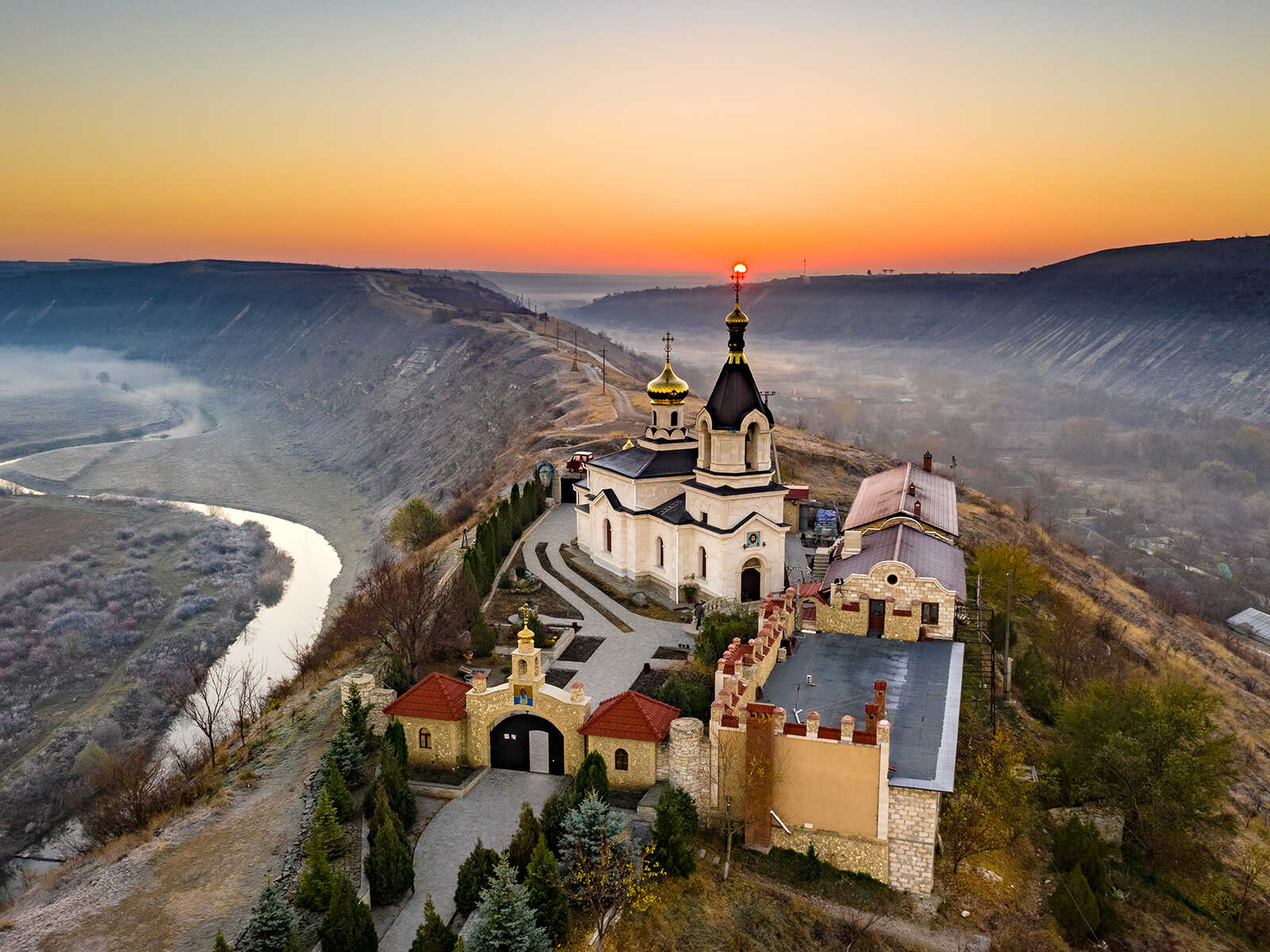
Orheiul Vechi
Conveniently located 45-50 minutes from Chişinău, Orheiul Vechi is a fascinating historical and cultural complex of the city and is a witness to the passage of time and the meeting of civilizations. This one-of-a-kind attraction allows you to discover a centuries-old archaeological and architectural treasure trove.
Nestled within a spectacular limestone cliff landscape, Orheiul Vechi presents a captivating view of ancient monasteries, cave homes, and stunning panoramic vistas. The site’s highlight is the iconic Cave Monastery Complex, which dates back to the 13th century and has served as a spiritual sanctuary for centuries.
Explore the labyrinthine caves where the walls tell tales of past eras before stepping out to see stunning vistas of the Raut River valley. From the ancient Dacians and Byzantine influences through the Ottoman and Russian eras, each step reveals the layers of history that molded this extraordinary place.
Orheiul Vechi extends beyond its historical significance by preserving traditions and providing insights into Moldova’s cultural heritage. You may immerse yourself in local culture, crafts, and cuisine, adding a rich layer to your experience.

Book a tour today in Moldova
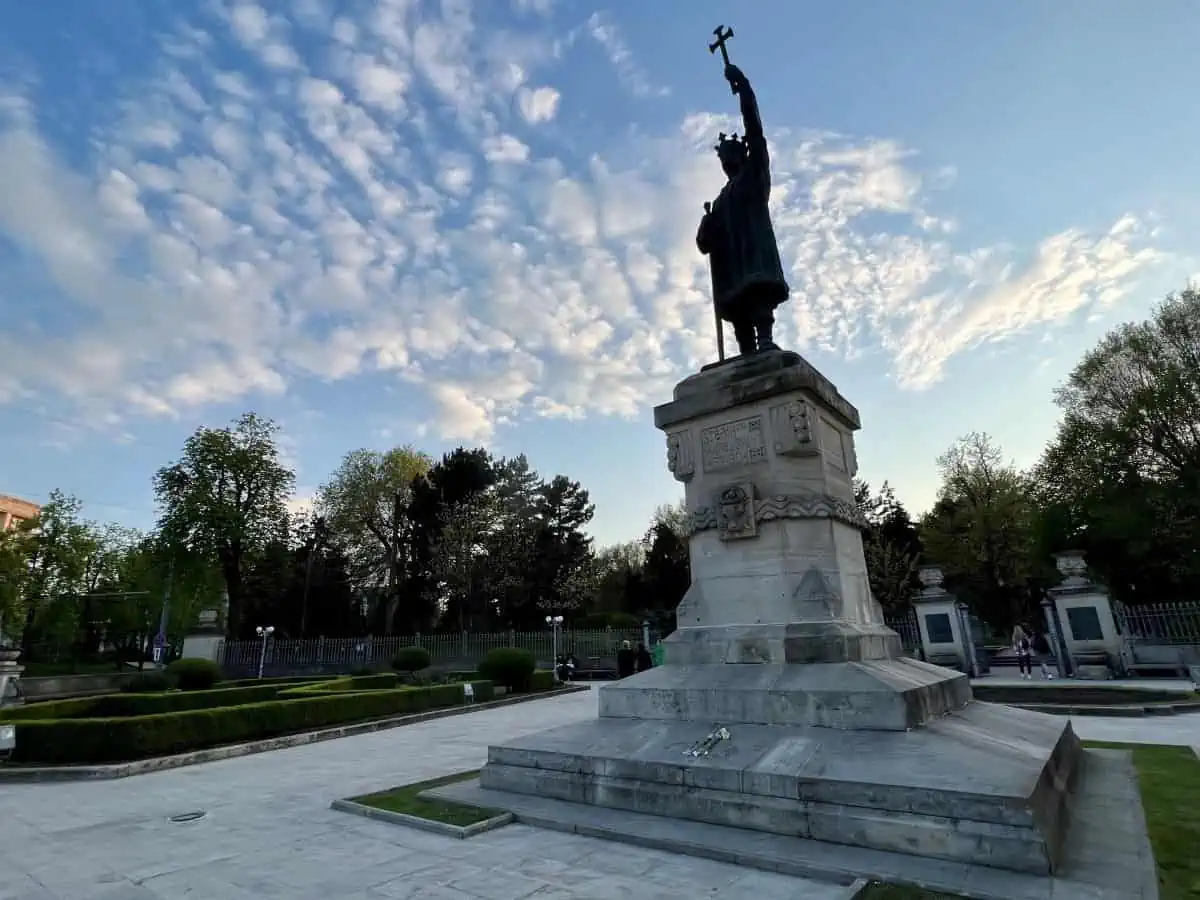
Stefan cel Mare Park
Stefan cel Mare Park is one of the largest and most popular parks in Chisinau, the capital city of Moldova. The park is named after Stefan cel Mare, a Moldovan ruler from the 15th century who is considered a national hero.
The park is located in the central part of the city, near the Government House and the Academy of Sciences. It covers an area of about 7 hectares and is a favorite spot for locals and tourists alike.
Stefan cel Mare Park is known for its beautiful green spaces, tree-lined pathways, and well-maintained gardens. It has a peaceful atmosphere and offers a relaxing environment away from the hustle and bustle of the city.
The park features various amenities and attractions, including a lake where visitors can rent paddle boats, a children’s playground, and numerous cafes and restaurants. There are also sculptures and monuments throughout the park, including a statue of Stefan cel Mare himself.
During the summer months, the park hosts various cultural and entertainment events, such as concerts and festivals. It is also a popular place for people to gather for picnics, sports activities, or simply to enjoy a leisurely walk or jog.
Overall, Stefan cel Mare Park is a cherished green space in Chisinau that offers a beautiful setting for relaxation, recreation, and cultural activities. It is a must-visit destination for both locals and tourists seeking a tranquil escape in the heart of the city.
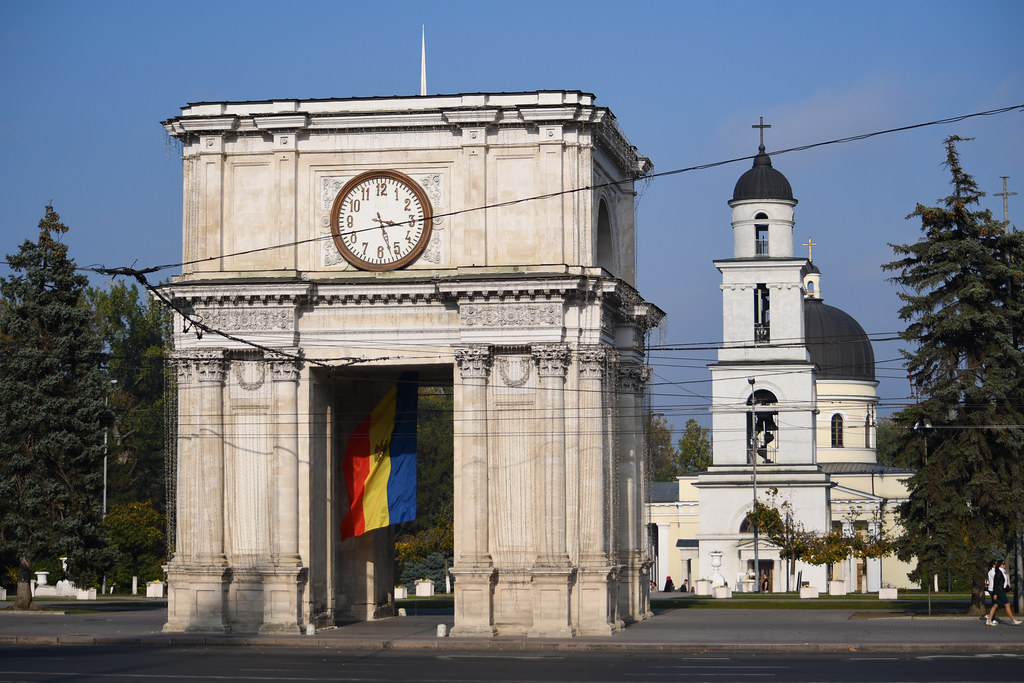
Triumphal Arch
The Triumphal Arch in Chisinau is a landmark monument located in Moldova’s capital city. It was built in 1841 to commemorate the victory of the Russian Empire in the Russo-Turkish War of 1828-1829. It was originally constructed in wood, but later rebuilt in stone in 1842.
The arch was designed by architect Ieronim Borelli and is built in a neoclassical style. It is made up of three arches, with the central one being the largest. The arch is adorned with various decorative elements such as sculptural reliefs, Corinthian columns, and ornamental details. The sculptures depict scenes from the war, as well as allegorical figures representing victory and peace.
The Triumphal Arch underwent several renovations over the years, with the most recent one taking place in 1959. During the Soviet era, the arch was dedicated to the victory of the Soviet Union in World War II and featured inscriptions in Russian. However, after Moldova’s independence in 1991, the arch was rededicated to the original purpose of commemorating the Russo-Turkish War.
Today, the Triumphal Arch in Chisinau serves as a symbol of national pride and a popular tourist attraction. It stands in a prominent location in the city center, overlooking the central Stefan cel Mare Boulevard. It is often decorated during national holidays and events and serves as a gathering point for celebrations and parades.
Suggested Budget for Chişinău
When considering the travel costs of visiting Chişinău, it’s important to factor in accommodation, food, and transportation expenses. Accommodation prices can vary based on your preferences, ranging from budget hostels and guesthouses to mid-range hotels and luxurious options. On average, budget travelers spend around $20 to $50 per night; mid-range travelers can expect to pay between $50 to $100, and luxury accommodations cost more than $100 per night.
Food expenses will also depend on your dining choices. Local markets and street food stalls offer affordable options, while mid-range restaurants provide a balance between quality and cost. Budget travelers may spend around $10 to $20 per day on meals, while mid-range travelers can allocate $20 to $40.
Transportation costs will largely depend on your mode of travel. Chişinău offers public transportation options such as buses, trolleybuses, and minibusses that are budget-friendly, with fares usually around $0.20 to $0.50 per ride. Taxis are available as well, with costs varying based on distance.
By planning ahead and making mindful choices, you can manage your travel costs effectively while enjoying all that Chişinău has to offer.
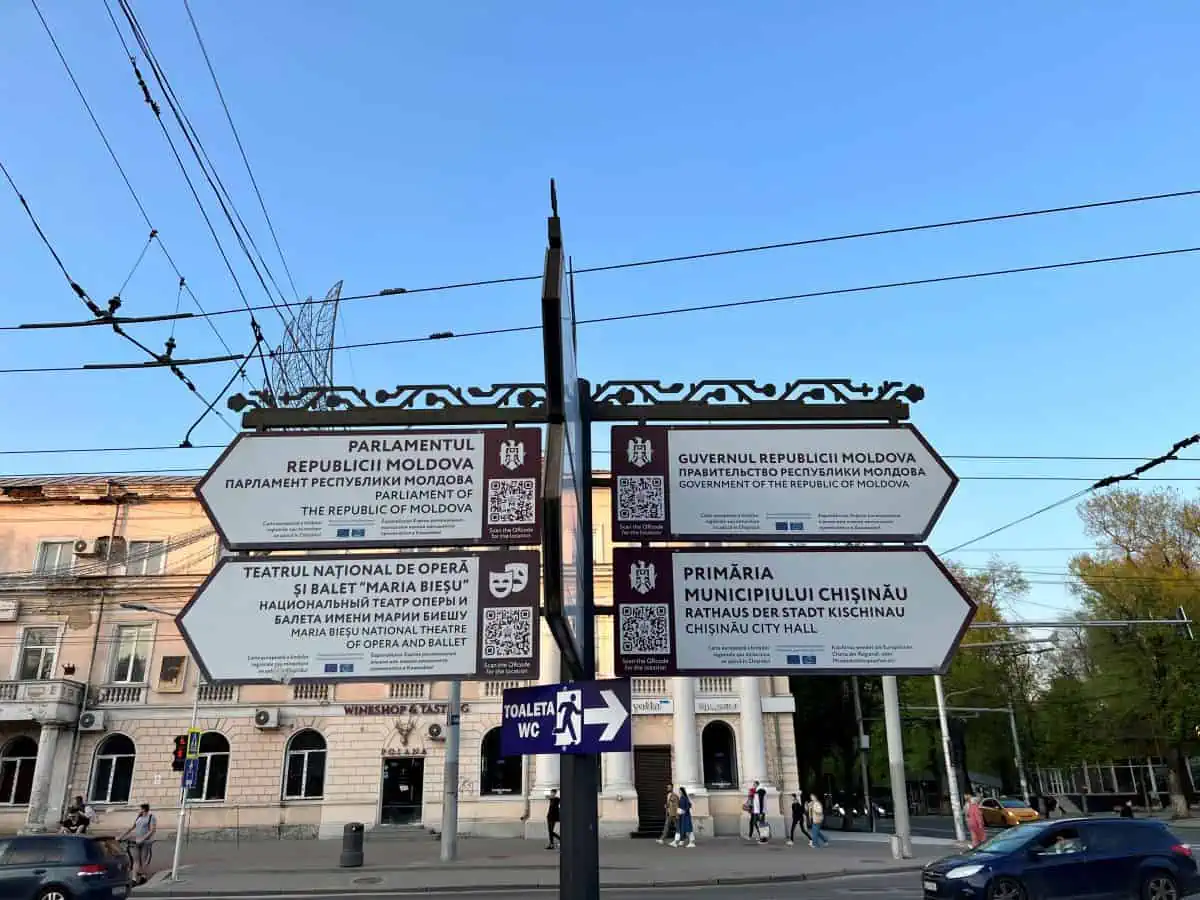
How to Stay Safe in Chişinău
Chisinau, the capital city of Moldova, is generally considered to be a safe city for visitors. However, as with any place, it is important to take certain precautions to stay safe. Here are some tips to help you stay safe in Chisinau:
- Be cautious in crowded areas: Like any major city, busy areas can be a target for pickpockets and other petty crimes. Keep an eye on your belongings, especially in crowded places such as markets, public transportation, and tourist attractions.
- Use licensed taxis or ride-sharing services: When using taxis, make sure to use authorized and licensed taxis or reputable ride-sharing services, such as Yandex, Uber, or Bolt. This reduces the risk of scams or other issues.
- Be cautious at night: While Chisinau is generally safe, it is advisable to be cautious when walking alone at night, especially in less crowded areas. Stick to well-lit and busy streets, and consider using transportation instead of walking long distances late at night.
- Use reputable accommodations: Choose reputable and well-reviewed accommodations for your stay in Chisinau. It is advisable to book accommodations in safe and well-populated areas.
- Avoid public transportation during rush hours: If you plan to use public transportation, avoid traveling during rush hours when the crowds are dense. This minimizes the risk of pickpocketing and other potential issues.
- Be aware of scams: Like in any tourist destination, be cautious of scams targeting tourists. Be wary of strangers approaching you with offers that seem too good to be true or requests for personal information.
- Respect local customs and traditions: Familiarize yourself with the local customs and traditions of the country to avoid unintentionally causing offense or attracting unwanted attention.
As always, it is advisable to stay updated on the current travel advisories and guidelines provided by your government and to use your common sense while exploring any new city.
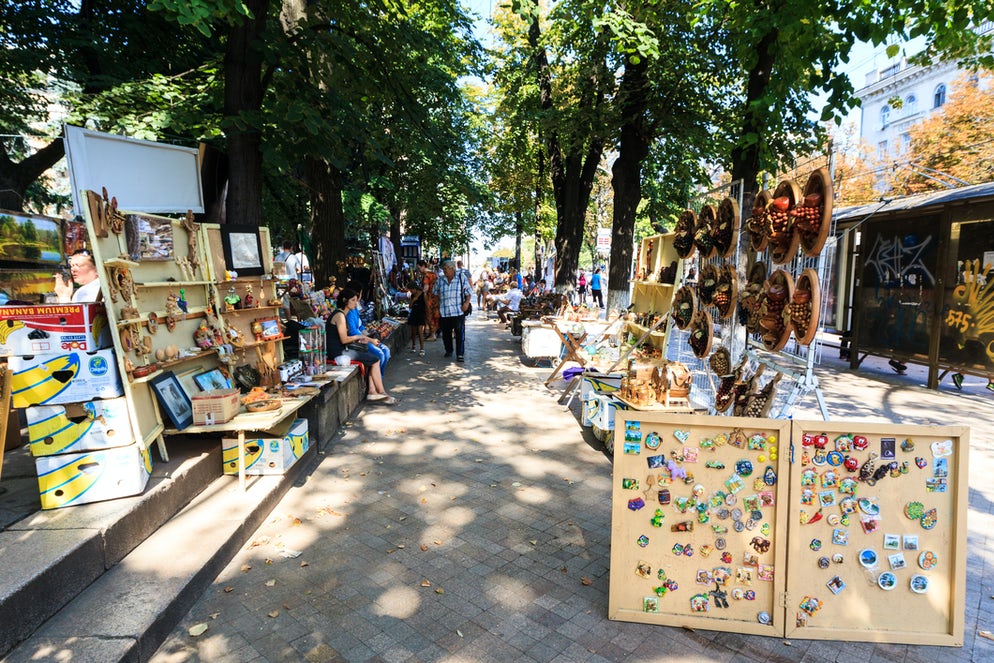
Know Before You Go to Chişinău, Moldova
What is the local currency?
The local currency is the Moldovan Leu (lion). While more and more places accept credit cards, you’ll need to carry cash for minor purchases, including any shopping you intend to do at the Central Market. I spent more cash in Moldova than in any of the other Balkan countries that I visited.
What language is spoken in Chişinău, Moldova?
The official language of Moldova is Moldovan, which is essentially a dialect of Romanian. Therefore, Romanian is the most commonly used language in the country. However, Russian is also widely spoken, especially in the eastern part of the country. Russian is often used in official capacities and is commonly spoken by older generations. As for signs, they are primarily in the Moldovan (Romanian) language, but it is not uncommon to see signs in both Romanian and Russian, particularly in areas with a significant Russian-speaking population.

Book a tour today in Moldova
.
.

Bryn Jacobs Chief Editor
Hello dear Travelers! I am Bryn Jacobs and I am your travel advisor. Having a vast experience in traveling throughout Eastern Europe and having researched this part of the world myself. I write articles on the site about travel experiences in Eastern Europe with statistics and interesting facts.

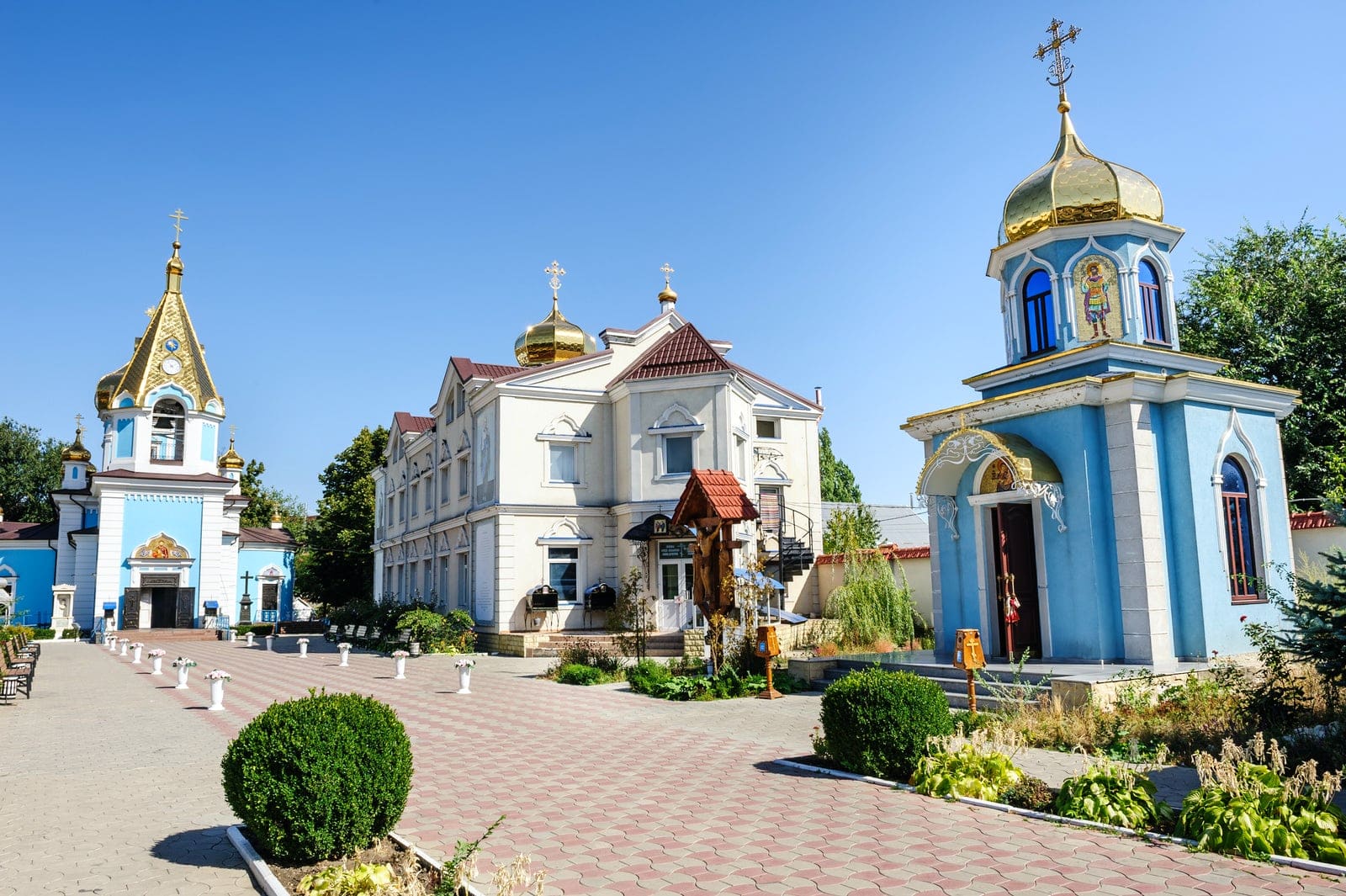
[…] Moldova, a hidden gem in Eastern Europe, offers a unique blend of history, culture, and natural beauty. Often overlooked by travelers, this small country is rich in traditions, stunning landscapes, and delicious cuisine. Whether you’re a history buff, a nature lover, or a foodie, Moldova has something for everyone. Here’s a guide to the best things to do in Moldova for tourists. […]